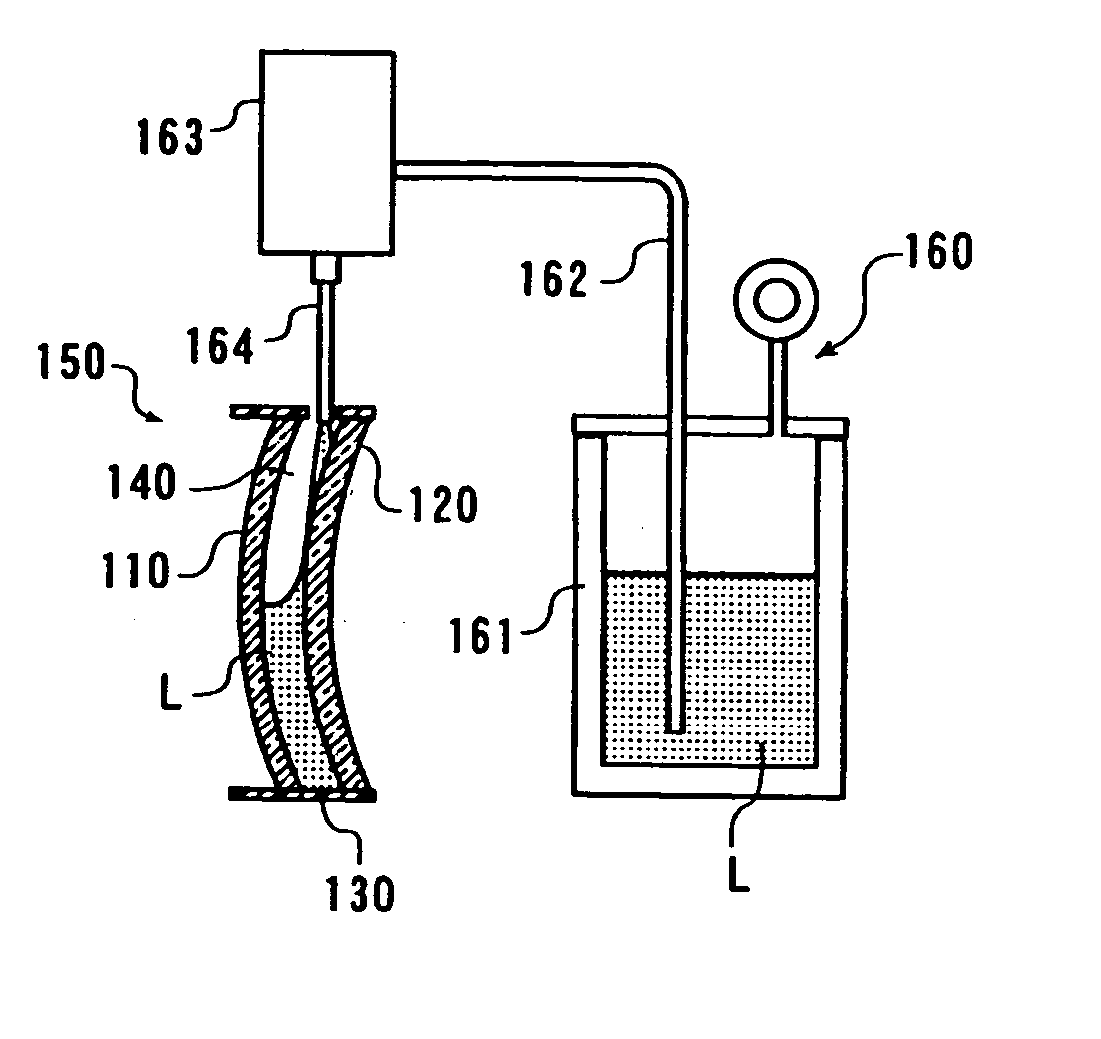Producing method for plastic lens and raw material storage/supply apparatus
a production method and technology of raw materials, applied in the direction of lenses, instruments, other domestic objects, etc., can solve the problems of reducing yield, and reducing the service life of cooling water supply equipmen
- Summary
- Abstract
- Description
- Claims
- Application Information
AI Technical Summary
Benefits of technology
Problems solved by technology
Method used
Image
Examples
example 1
[0114] As raw materials of the lens, 90 g of bis-(2,3-epithiopropyl)disulf-ide and 10 g of 4, 8 or 4, 7 or 5, 7-dimercaptomethyl-1,11-dimercapto-3,6,-9-trithiaundecane were mixed, then added with 1.0 g of 2-(2-hydroxy-5-methylphenyl)-2H-benzotriazole (trade name Sisorp 701, manufactured by Sipro Kasei Co.) as an ultraviolet absorber and sufficiently agitated for complete dissolution. Then 0.02 g of N,N-dimethylcyclohexylamine and 0.10 g of N,N-dicyclohexylmethylamine as catalysts were added, and the mixture was sufficiently agitated under a temperature of 19.degree. C. to obtain a uniform liquid. Then this polymerizable composition was cast into a plastic lens glass mold having a gap of 10 mm between two glass molds. The mold was placed in an atmospheric polymerization oven, and a polymerization hardening was executed by maintaining an initial polymerization temperature of 10.degree. C. for 10 hours, then elevating the temperature from 10.degree. C. to 130.degree. C. over 5 hours, m...
example 2
[0116] A polymerizable composition was prepared, cast in a mold, hardened, annealed and subjected to an inspection for an optical strain in the same manner as in Example 1 except that the initial polymerization temperature condition was 15 hours at 10.degree. C. As a result, a production yield was 90%.
example 3
[0117] A polymerizable composition was prepared, cast in a mold, hardened, annealed and subjected to an inspection for an optical strain in the same manner as in Example 1 except that the initial polymerization temperature condition was 24 hours at 10.degree. C. As a result, a production yield was 90%.
PUM
| Property | Measurement | Unit |
|---|---|---|
| temperature | aaaaa | aaaaa |
| thickness | aaaaa | aaaaa |
| temperature | aaaaa | aaaaa |
Abstract
Description
Claims
Application Information
 Login to View More
Login to View More - R&D
- Intellectual Property
- Life Sciences
- Materials
- Tech Scout
- Unparalleled Data Quality
- Higher Quality Content
- 60% Fewer Hallucinations
Browse by: Latest US Patents, China's latest patents, Technical Efficacy Thesaurus, Application Domain, Technology Topic, Popular Technical Reports.
© 2025 PatSnap. All rights reserved.Legal|Privacy policy|Modern Slavery Act Transparency Statement|Sitemap|About US| Contact US: help@patsnap.com



